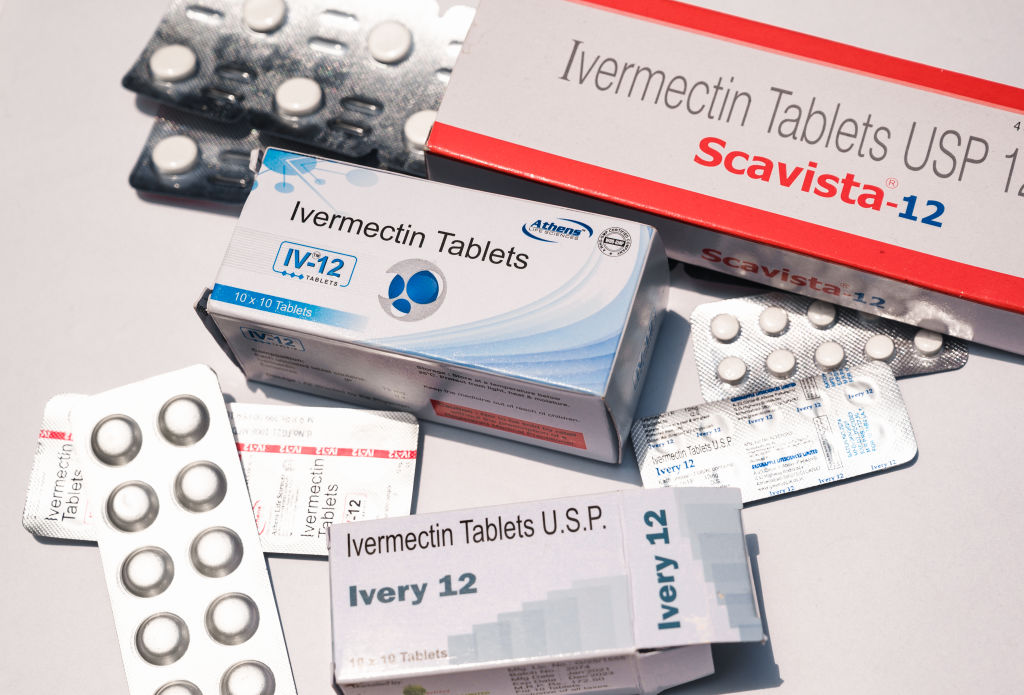Ivermectin won't treat COVID-19, but it might kill you, CDC warns
Calls to poison control centers regarding exposure to ivermectin have increased five-fold in recent months.

Thousands of Americans may be taking potentially dangerous doses of an anti-parasitic drug because of misinformation that it will prevent or treat COVID-19, according to a new warning from the Centers for Disease Control and Prevention (CDC).
On Thursday (Aug. 26), the CDC alerted doctors that there's been a surge in prescriptions for the drug, called ivermectin, since the pandemic began, along with a five-fold increase in calls to poison control regarding toxic effects from the drug. People are even taking forms of the drug intended for use in animals, which can be bought over the counter but are not safe for human use, and can cause serious side effects, according to the CDC.
In humans, ivermectin is approved to treat certain parasitic diseases; a topical version of the drug is sometimes used to treat head lice. In animals, ivermectin can treat or prevent parasitic diseases such as heartworm, according to the Food and Drug Administration.
But recently, misinformation about ivermectin has led some people to take the drug for COVID-19, even though it's not approved for this use, Live Science previously reported. The U.S. The National Institutes of Health has said that there's currently insufficient evidence to recommend the drug as a COVID-19 treatment. A March study of ivermectin use in mild COVID-19 cases found it had no benefit.
Related: 14 coronavirus myths busted by science
Prior to the COVID-19 pandemic, U.S. retail pharmacies issued an average of 3,600 human prescriptions per week for ivermectin, according to the CDC. But in recent months, prescriptions have soared, reaching more than 88,000 prescriptions per week in mid-August, 2021, according to the CDC.
What's more, calls to poison control centers across the U.S. regarding ivermectin exposure increased three-fold in January 2021, and five-fold in July 2021, compared with pre-pandemic levels, the agency said.
Sign up for the Live Science daily newsletter now
Get the world’s most fascinating discoveries delivered straight to your inbox.
Veterinary forms of the drug meant for big animals, such as horses and cows, can be very dangerous for people, in part because they come in large or concentrated doses that can result in an overdose. Animal products can also contain inactive ingredients that haven't been studied in humans, the CDC said.
Overdoses of ivermectin can cause nausea, vomiting, diarrhea, low blood pressure, decreased consciousness, confusion, hallucinations, seizures, coma and even death.
The CDC cited one example of a man who "drank an injectable ivermectin formulation intended for use in cattle in an attempt to prevent COVID-19." The man went to the hospital with confusion, drowsiness, hallucinations, and tremors; he recovered only after being hospitalized for nine days.
The FDA issued similar warnings about ivermectin earlier this year. On Saturday (Aug. 21), the agency's Twitter account made headlines when officials tweeted about ivermectin's use: "You are not a horse. You are not a cow. Seriously, y'all. Stop it.".
People should be aware that ivermectin does not treat or prevent COVID-19; and they definitely should not swallow ivermectin products intended for use on the skin or use in animals, the CDC warned. People should also seek immediate medical attention if they have taken ivermectin and are experiencing side effects. The agency also reiterated that the safest and most effective way to prevent COVID-19 is to get vaccinated against the disease.
Originally published on Live Science.

Rachael is a Live Science contributor, and was a former channel editor and senior writer for Live Science between 2010 and 2022. She has a master's degree in journalism from New York University's Science, Health and Environmental Reporting Program. She also holds a B.S. in molecular biology and an M.S. in biology from the University of California, San Diego. Her work has appeared in Scienceline, The Washington Post and Scientific American.









